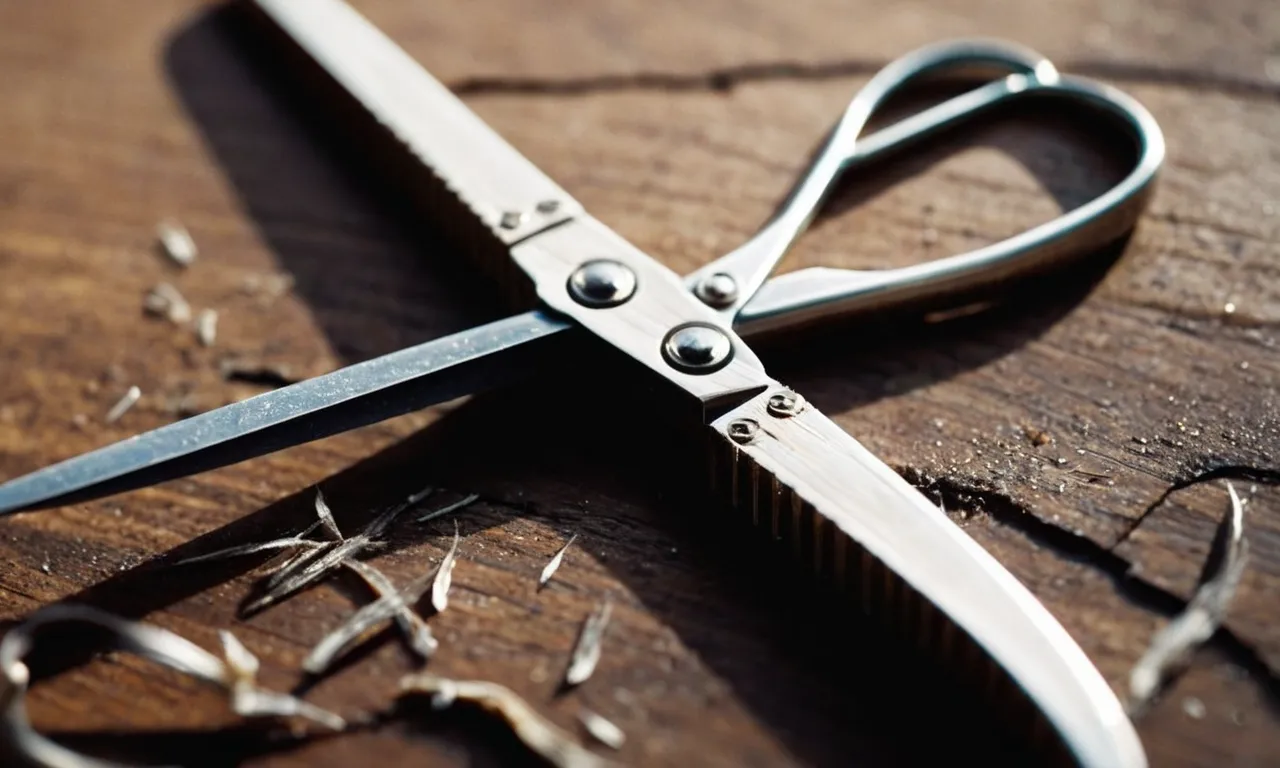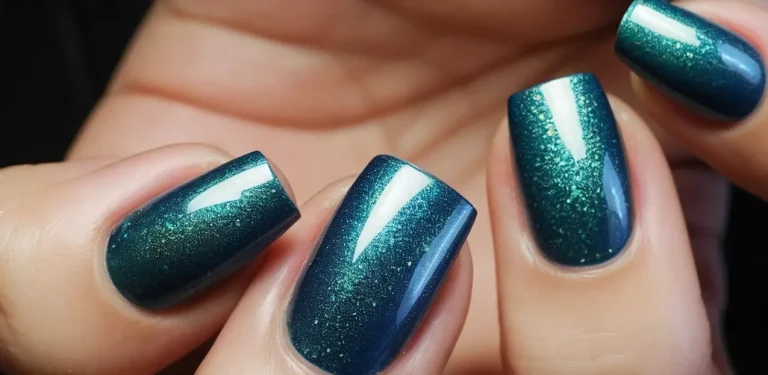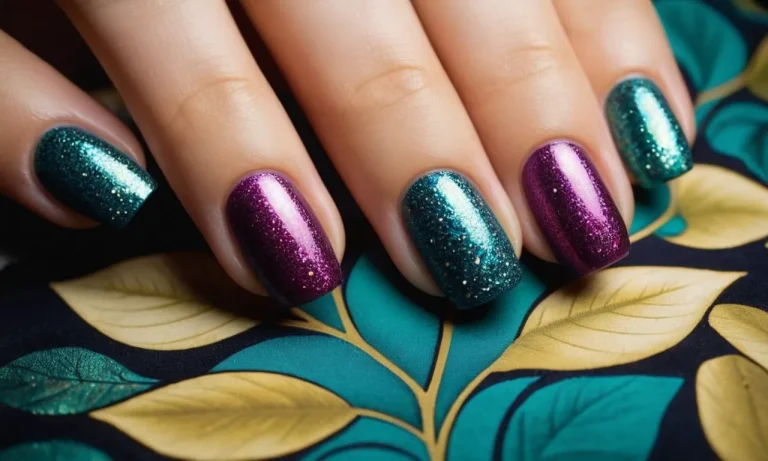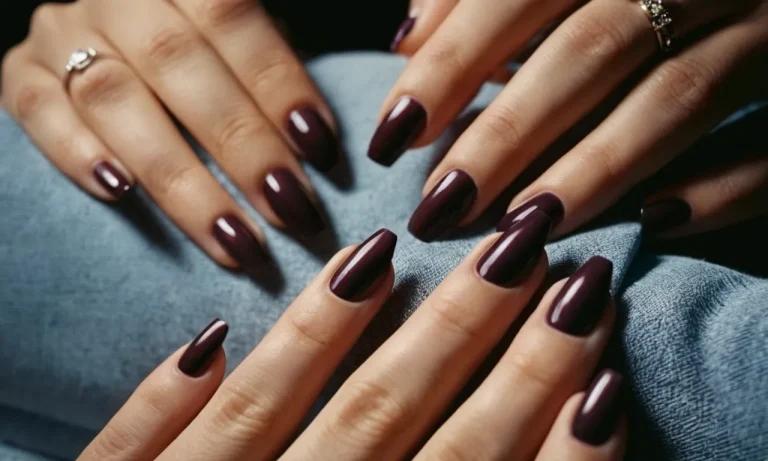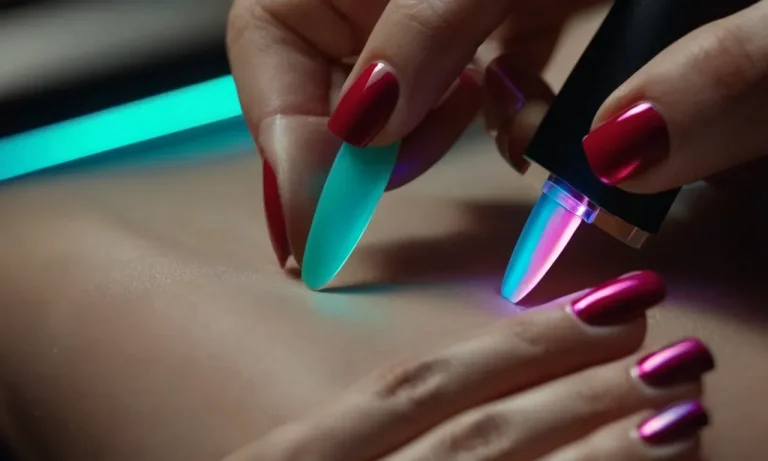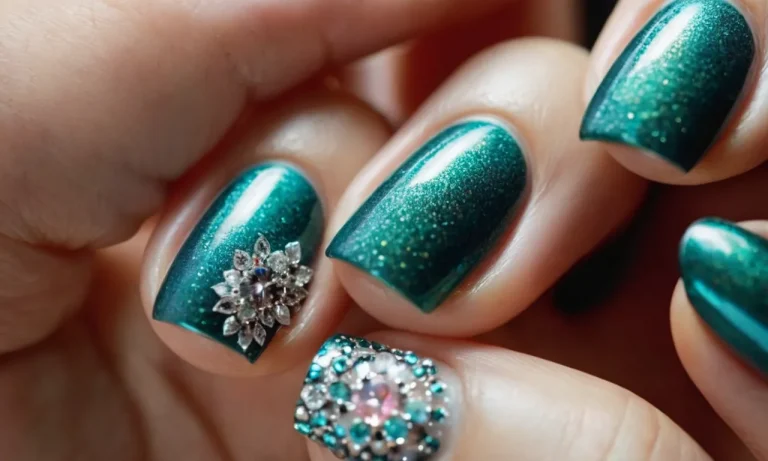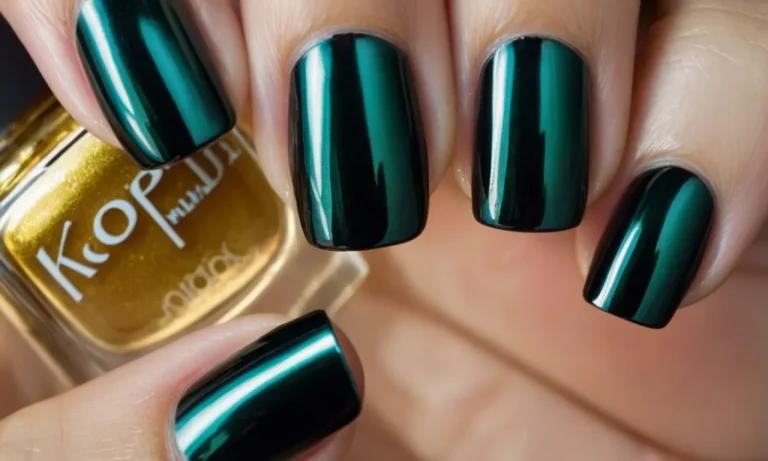How To Get Nail Glue Off Scissors: A Step-By-Step Guide
Have you ever accidentally gotten nail glue on your scissors while doing your nails? It can be extremely frustrating when your good scissors get sticky and tacky from the nail glue residue.
If you’re short on time, here’s a quick answer to your question: use acetone or rubbing alcohol to dissolve the dried nail glue on the scissors. Then scrape off any remaining residue with a toothpick and wipe clean.
In this comprehensive guide, we will go over several methods you can use to safely and effectively remove nail glue from scissors without damaging the blades.
Try Using Acetone or Rubbing Alcohol
Soak scissors in pure acetone/alcohol
One of the most effective methods is to soak the sticky scissors directly in pure acetone (nail polish remover) or rubbing alcohol. This helps dissolve the dried glue so it can be wiped away more easily. Choose a container like a small glass jar or bowl and fully submerge the scissor blades.
Let them soak for 5-10 minutes then check if the glue residue scrapes off.
For best results, use 100% pure acetone rather than diluted nail polish remover from the drugstore. The higher concentration works faster at breaking down substances like super glue or nail epoxy. Wear gloves when handling pure acetone and work in a well-ventilated area.
Rubbing alcohol can also be effective but may require longer soaking times up to 30 minutes. Check the scissors periodically and scrape gently with a toothpick to test if the glue is loosening.
Dip a cotton ball in acetone and wipe scissors blades
If fully soaking isn’t convenient, try dipping a cotton ball or pad in pure acetone and gently wiping the sticky scissor blades. Concentrate on one small area at a time, holding the pad on for 30-60 seconds before wiping to let the acetone penetrate and dissolve the glue.
Re-dip the cotton as needed to keep it saturated. The cotton allows for more controlled application rather than soaking the whole tool.
You can also use a cheap toothbrush dipped in acetone to help scrub away residue after the initial wiping steps. The stiffness of the bristles combined with the solvent works well to remove stubborn glue. Take care not to bend or apply too much pressure on the scissor joints when scrubbing.
This method may take 10-15 minutes but the concentrated application of acetone can dissolve even hardened glue without having to soak the entire tool.
Use Cooking Oil to Dissolve the Glue
Coat glue residue with vegetable/olive oil
When nail glue gets stuck on your scissors, one of the easiest methods to remove it is by using cooking oil. Vegetable oil, olive oil, or any other type of cooking oil can help dissolve and break down the glue. Here are the steps:
- Get a small bowl and pour a few tablespoons of oil into it – enough to fully coat the glue residue on the scissors.
- Dip the tip of the scissors into the oil, or use a cotton ball or soft cloth to gently rub the oil over the entire glue area.
- Make sure the oil fully penetrates and softens the glue. Leave it to sit for 5-10 minutes.
The oil will seep into the glue and cause the adhesive bonds to weaken. This makes it much easier to wipe away. The oil basically dissolves the glue. Vegetable oil works well because it contains triglycerides that can break down the chemicals in the nail glue.
Let it sit for 5-10 minutes before wiping off
After you’ve coated the nail glue with oil, don’t try to immediately wipe it off. Let the oil sit for 5-10 minutes first. This gives time for the oil to fully penetrate and loosen the glue. If you try wiping it off too soon, the glue may still be sticky and stubborn.
Set a timer for 5 minutes after applying the oil. For particularly thick globs of glue, you may need to wait closer to 10 minutes. This allows the oil to completely dissolve the glue. The glue will transition from thick and gooey to dissolved and slippery, making it super easy to remove.
You’ll know the oil is ready when the glue takes on an oily sheen and is no longer opaque. Try gently rubbing it with your finger – if it feels slimy and comes off easily, it’s ready to be wiped off! Don’t wait too long though, as the oil could get absorbed into the metal of the scissors if left for over an hour.
The ideal time is 5-10 minutes. This gives the oil enough time to penetrate the glue without negatively affecting your scissors. Be patient and let the oil do its work. Rushing the process won’t get the glue off properly. Letting it sit makes all the difference!
Scrape Off Glue Gently
Use a toothpick or straight pin
When trying to remove dried nail glue from your scissors, it’s best to start with something small and thin like a toothpick or straight pin. This allows you to precisely target the stuck-on glue and gently scrape it off.
Applying too much pressure with a larger tool could scratch or damage the scissors blades. Work slowly and carefully.
Apply pressure slowly and scrape in direction of blade
As you use the toothpick or pin to scrape off the nail glue, be sure to apply pressure gradually and scrape in the same direction as the scissor blade. Scraping back and forth perpendicular to the blades could cause unnecessary wear and scratches.
Gently gliding the scraping tool along the length of the blade is safer for the scissors.
You may need to apply a little more pressure to chip off stubborn chunks of old glue. But take care not to bend or warp the fine scissors tips with too much force. Patience and a light touch are key here.
Take care not to scratch or damage blades
Scissors, especially the delicate crafting and manicure varieties, have finely sharpened blades that can be scratched or damaged easily. So use extra caution when scraping off nail glue to avoid leaving behind rough scratches or nicks.
Applying gentle yet firm pressure with the toothpick or pin, concentrate on flaking off the glue without dragging the scraping tool perpendicular across the blade surface. Tiny circular motions can help break up the glue without scuffing up the polished scissor finish.
Take your time and regularly check for any spots you may have missed. Nail glue can be sneaky, hiding out in small crevices. With care and attention, you can get your scissors sparkling clean again without damaging those fine tips or edges.
Clean Scissors Thoroughly Afterward
Removing nail glue from scissors can leave behind sticky residue that needs to be cleaned off. Properly cleaning your scissors after removing glue will help keep them in great shape for future use. Here are some tips for thoroughly cleaning your scissors after removing nail glue:
Wash with soap and warm water
Washing the scissors with soap and warm water is an effective way to remove any leftover glue residue. Fill a bowl with warm water and add a small amount of mild dish soap. Swish the scissors blades around in the soapy water to loosen and wash away remaining glue.
Make sure to get into small crevices and joints where glue may be sticking. Give the handles a good wash too. Rinse thoroughly afterward with clean water to remove all soap.
Dry completely with a soft cloth
It’s important to dry the scissors fully after washing them to prevent any moisture from remaining. Water can lead to the development of rust over time. Carefully pat dry all parts of the scissors with a soft, lint-free cloth or towel.
You may need to use a cotton swab or pipe cleaner to fully dry in small grooves or tight areas. Allow the scissors to air dry for 5-10 minutes before closing them to ensure they are completely dry.
Apply mineral oil/WD40 to condition blades
Applying a light coat of mineral oil or a lubricant like WD40 can help condition the scissor blades after cleaning. This helps prevent corrosion and keeps the blades moving smoothly. Put a few drops along the blades, then open and close the scissors a few times to distribute the oil evenly.
Wipe away any excess with a soft cloth. You can also use products like Tri-Flow or sewing machine oil to lubricate the blades and joints. Proper lubrication can help extend the life of your scissors and maintain sharp cutting edges.
Taking the time to thoroughly clean and care for your scissors after removing stuck-on nail glue will help keep them in optimal condition. Proper cleaning and lubrication can go a long way in maintaining their performance and longevity.
With some warm soapy water, drying, and conditioning, your scissors will be sparkling clean and ready for their next crafty challenge.
Conclusion
Getting nail glue residue off your good scissors can seem like an impossible task, but with some gentle cleaning methods, it is very doable. The key is using solvents like acetone or oils to dissolve the sticky glue, combined with slow scraping and proper conditioning of the metal afterward.
Following this thorough guide, you’ll be able to restore your scissors to a clean, glued-free state again. No need to worry about throwing out a perfectly usable pair of scissors just because of some stubborn nail product.

